Ministry of Culture
India needs a 30-fold increase in renewable energy, 30-fold increase in nuclear energy and doubling of thermal energy, making 70% of energy carbon-free: Dr. Anil Kakodkar
Countries need to adopt decarbonization strategy based on their level of HDI: Former Chairman, Atomic Energy Commission
प्रविष्टि तिथि:
12 MAY 2020 9:44AM by PIB Mumbai
Mumbai, May 12, 2020
On the occasion of National Technology Day, a day which marks the anniversary of Pokhran Nuclear Tests of 1998, Former Chairman, Atomic Energy Commission and Chairman, Rajiv Gandhi Science & Technology Commission, Padma Vibhushan Dr. Anil Kakodkar, has conveyed a message to the people of India, about Dealing with energy needs in the Context of Climate Crisis.
‘National technology day is celebrated to commemorate the nuclear test that took place 22 years ago, that brought us national security’, he said in his online lockdown lecture organised by Nehru Science Centre, Mumbai, while talking about India's progress in the field of science and technology. After that India has entered into many International agreements with various countries to promote nuclear commerce for peaceful purposes. The idea was to secure energy security through nuclear energy, he added.
In his presentation, he explained about the correlation between Human Development Index (HDI) and Per Capita Energy Consumption all over the world. As per the statistics, countries with higher HDI where citizens enjoy high quality of life have higher per capita consumption of energy.
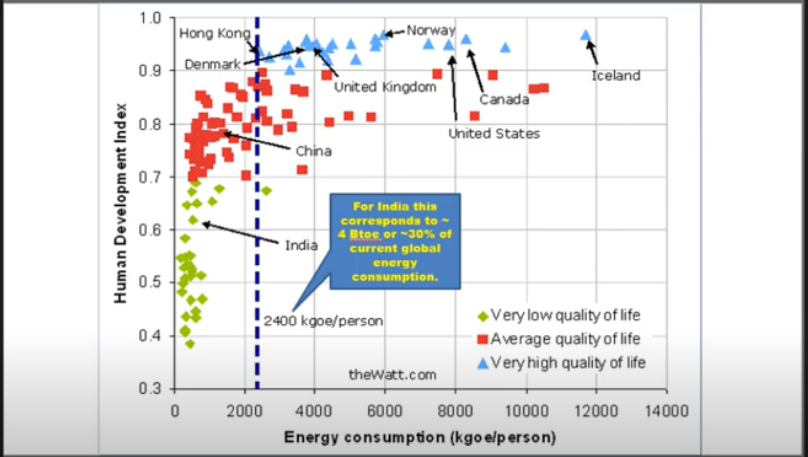
However with the rising climate issues, a developing country like India faces the challenge where we are caught between energy security on one side and climate security on the other. “The need of the hour is to strike a balance between enhancing the quality of human life as well as keeping a control over the climate crisis.”
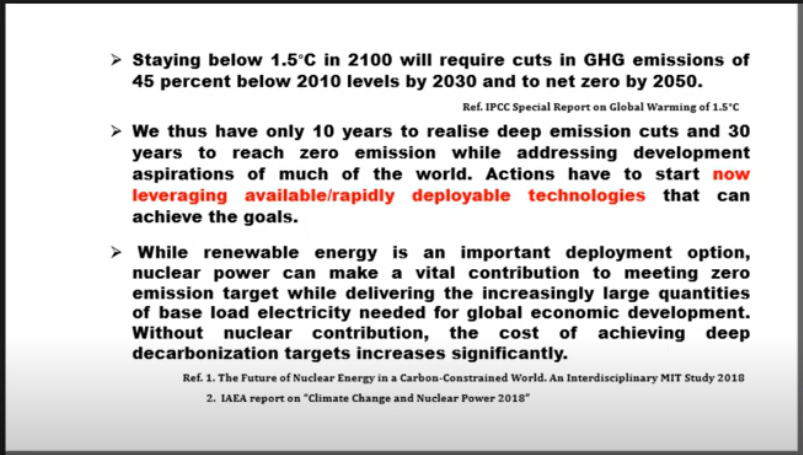
Researchers across the globe are studying about climate change on how to control CO2 emissions, which is a serious threat to the environment. As per the report of Inter Governmental Panel on Climate Change, “staying below 1.5 degree increase in 2,100 will require cuts in Green House Gas (GHG) emissions of 45% below 2010 levels by 2030 and to net zero by 2050”; which means we have only 10 years left to realise deep CO2 emission cuts while ensuring development aspirations of many countries across the world.
To achieve this, the world has to act now by leveraging available/rapidly deployable technologies. This is where the requirement of nuclear energy, which can easily meet the ‘zero emission’ target, arises. With the contribution of nuclear energy, the cost of deep decarbonisation can be reduced. Decarbonising means reducing carbon intensity, i.e. reducing the emissions per unit of electricity generated (often given in grams of carbon dioxide per kilowatt-hour).
Decarbonisation of energy production in the country is essential since the demand for electric power from industries/commercial sector is high. Decarbonisation is possible by increasing the share of low-carbon energy sources, particularly renewables like solar, hydro and biomass together with nuclear which can greatly contribute in achieving zero emissions to a great extent.
Action Required:
Even when many countries are making active efforts in the field of energy efficiency the CO2 emission is still high when compared to preceding years. This shows we need better plans to control the same.
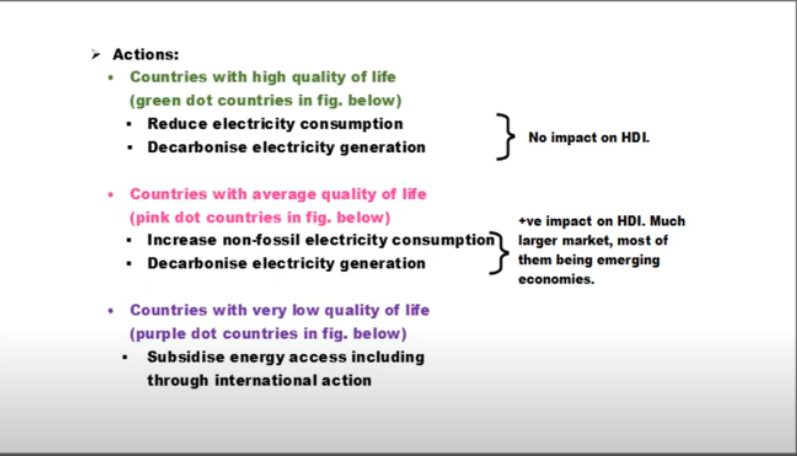
In order to control CO2 emission, different levels of consumption strategy need to be observed by different countries based on their HDI. For example, those countries with high Human Development Index, should reduce their energy consumption since it may not affect their HDI, much. In addition to this they should also decarbonise their electricity generation. And the countries with moderate HDI should focus on non-fossil electricity consumption while countries with low HDI should be able to provide subsidised source of cleaner energy to their citizens. This way every country can actively contribute towards low / zero emission.
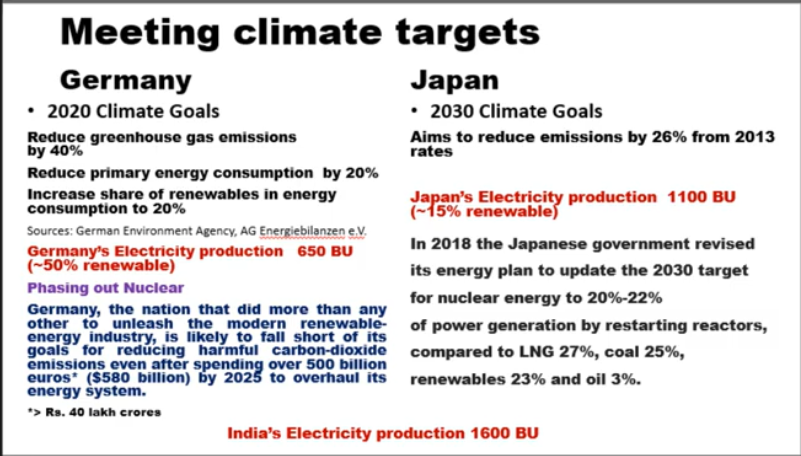
Japan is a country which has seen the brunt of the negatives of nuclear energy – the cruellest nuclear bombing at Hiroshima and Nagasaki that raised the global sensitivity of nuclear energy. But still the country has drafted an energy plan, to generate 20% to 22% of their total energy consumption as nuclear energy, to reduce CO2 emissions by 2030. Countries like Germany and Japan are already planning to cut GHG emission by 2020 and 2030 respectively which has allotted huge amount on production of renewable energy.
For a country like India, in order to decarbonise the energy consumption, we need a 30-fold increase in renewable energy, 30-fold increase in nuclear energy and doubling of thermal energy which would make 70% of energy carbon free.
Indian nuclear power at a glance:
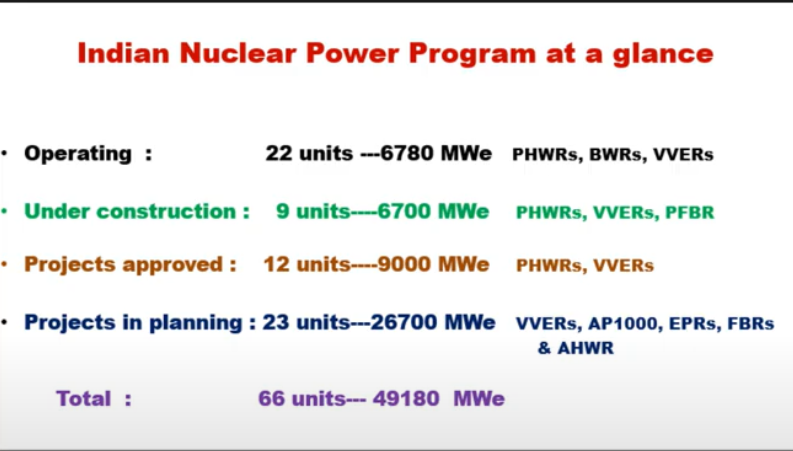
To meet the energy requirements of the country, currently there are 66 units with the capacity of 49180 MWe (including projects that are operating, under planning, under construction and those that are approved).
Nuclear Waste:
The major concern that pops up now is of how to manage the nuclear wastes, that is produced during energy generation. Dr. Kakodkar said, India adopts the policy of ‘Nuclear Recycle Technology’ - where the nuclear fuel - Uranium, Plutonium etc, once used for generation of energy, is reused as a resource material by the commercial industries to be recycled. More than 99% of Nuclear waste is reused as the waste management program in India prioritises recycling.
***
DL
Follow us on social media:  @PIBMumbai
@PIBMumbai  /PIBMumbai
/PIBMumbai  /pibmumbai
/pibmumbai  pibmumbai[at]gmail[dot]com
pibmumbai[at]gmail[dot]com
(रिलीज़ आईडी: 1623194)
आगंतुक पटल : 4887